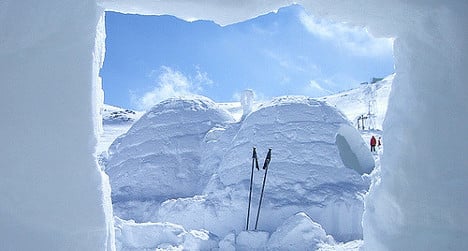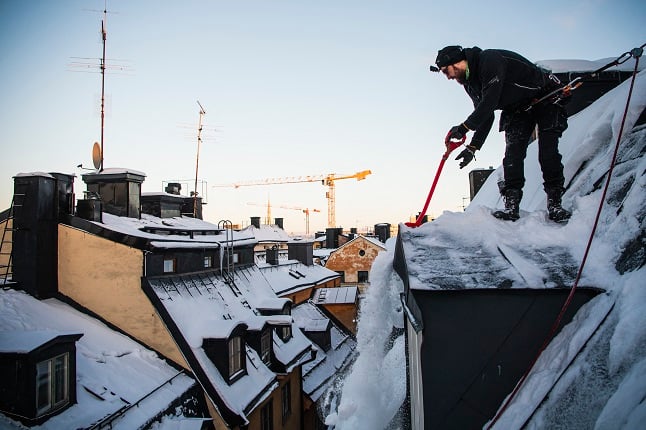The trio were ski touring at around 3,000m altitude on the Radüner Rothorn near Davos in the canton of Graubünden on Saturday afternoon when one of them was injured to the extent that he was unable to carry on, reports news agency ATS.
The skiers called rescue services, but due to foggy weather air rescue service Rega was unable to dispatch a helicopter.
Instead, a rescue team comprising three members of the Swiss Alpine Club and a doctor set out on skis.
On reaching the trio, they all set about to dig a shelter in the snow where the seven of them could stay overnight.
They were then picked up the following day by a Rega helicopter, the rescue service told ATS.
According to survival expert Christof Hagen of the Zurich-based Survival Outdoor Schule (SOS), learning how to build a snow shelter is a wise move for anyone venturing to remote places.
“It can make the difference between dying and surviving,” he told The Local.
“Temperatures in snow shelters are always zero degrees or slightly above, and you are protected from wind and snow,” he said.
Building an igloo or snow hole for survival “is the same technique as many mammals living in the snow environment”.
In terms of equipment, a shovel is essential for digging a simple shelter, while an igloo specifically requires a snowsaw – a small, lightweight item that is easy to take with you.
“To build an igloo you need to have quite some experience to be efficient and safe,” said Hagen.
Other, simpler, emergency snow shelters require less experience, he added.
Anyone venturing into the backcountry should also be skilled in safe trail-finding techniques and weather-interpretation, as well as being good at leadership, improvising and adapting to different situations, he advised.
Focusing on Stone Age wilderness techniques, Hagen’s SOS school has been running survival skills courses in winter and summer for 33 years, including igloo-building courses.



 Please whitelist us to continue reading.
Please whitelist us to continue reading.
Member comments